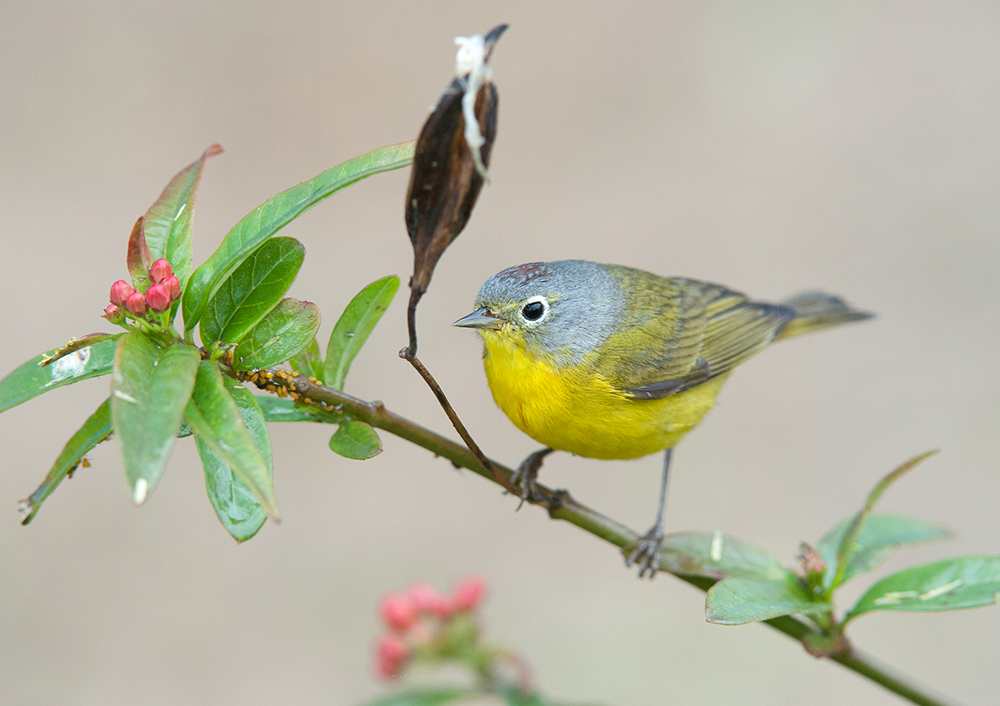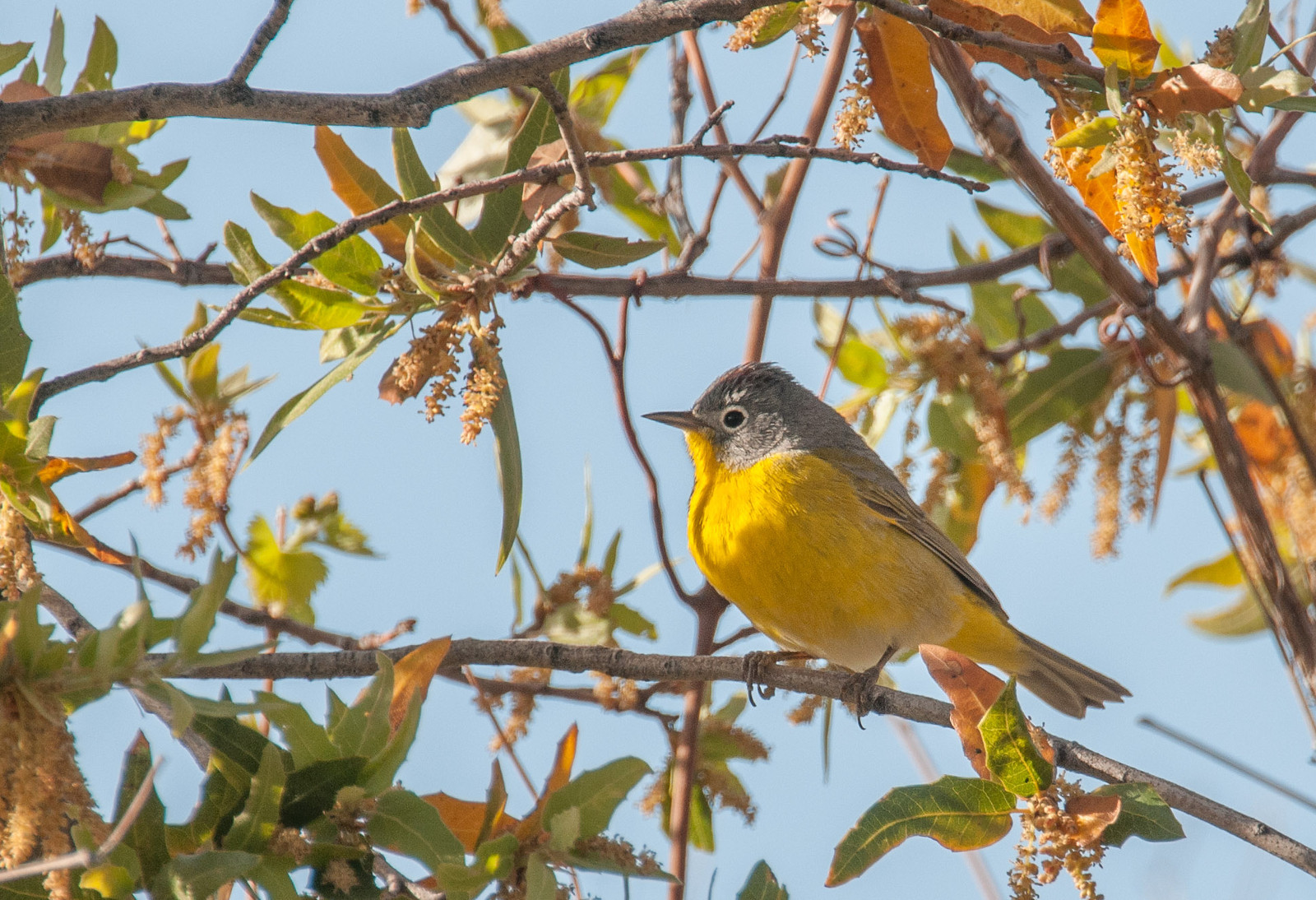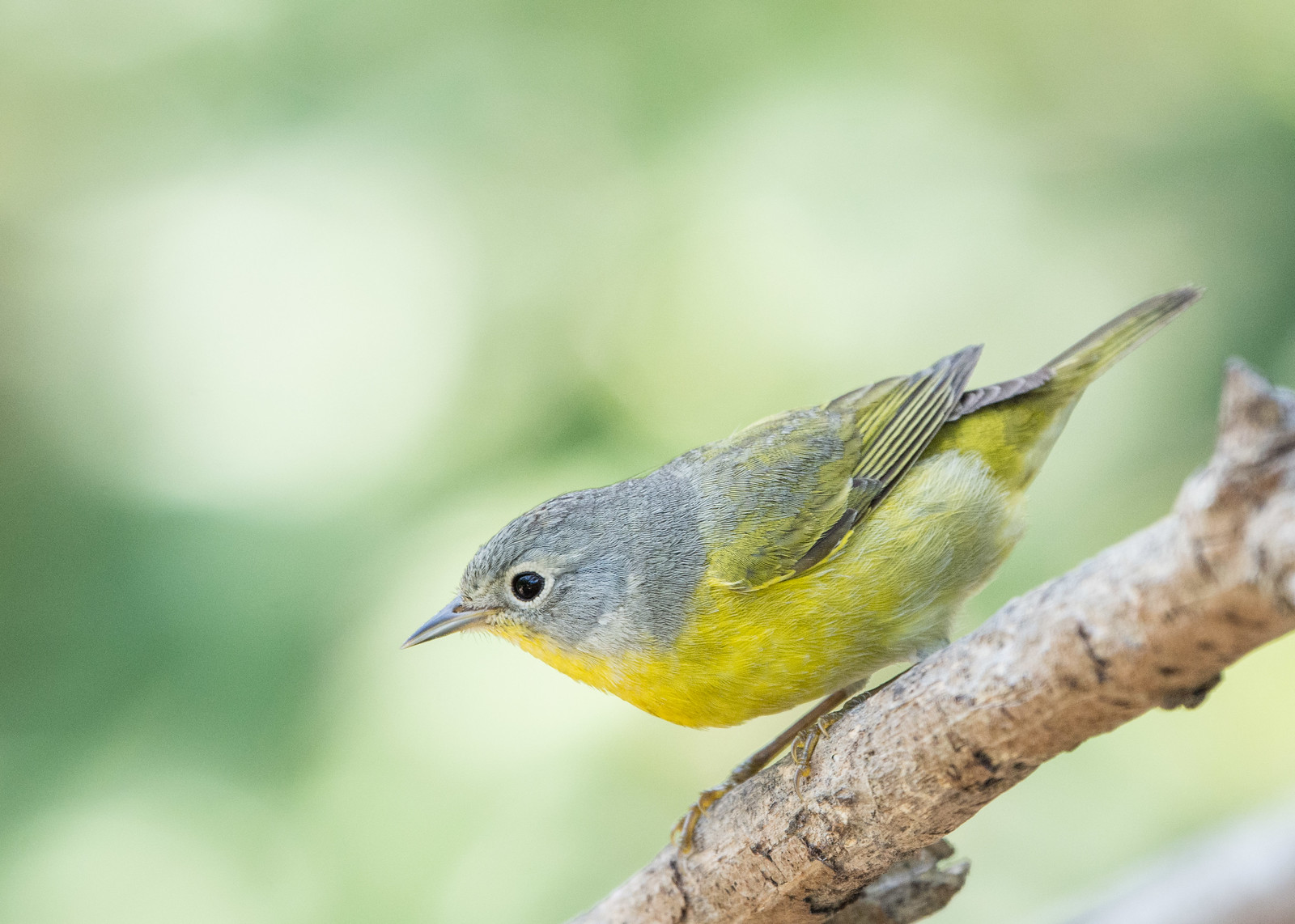| Early Spring Date: | April 22 |
| Late Spring Date: | May 24 |
| Best Dates to See in Spring: | April 27 - May 9 |
Spring: The number of Nashville Warblers passing through Monticello Park each spring varies considerably. During some years, more than 30 have been recorded, while during others, 5 or fewer. Their migration route is more toward the center of North America. They typically pass through Monticello early in migration, most often during the first week in May. They nest in the thick understory of deciduous and mixed forests in Canada and the northern states.
Fall: Nashville Warblers are uncommon at Monticello during the fall, with an average of only one or two sightings each year.
Where to See Them in the Park
Nashville Warblers generally forage in the understory and mid-story. They move around quickly and can be difficult to see well. You often hear them without seeing them. Occasionally, they go into the stream to drink and bathe.
Physical Description

Nashville Warblers are small, short-tailed warblers. Males have a gray head with a prominent white eyering. The back is olive with no wingbars, and the underparts are yellow. Males have a reddish crown which is not always visible. The wing feathers have yellow edges.

The yellow undertail is also an important fieldmark.

Females look like males with duller plumage. Fall birds of both sexes tend to be duller than spring birds.
Vocalizations
The song of the Nashville Warbler has two parts. The first is a series of two-note phrases, and the second sounds like a trill — see-bit see-bit see-bit see-see-see-see.
Hear the vocalizations of the Nashville Warbler.Notes
The Nashville Warbler, named by Alexander Wilson, has no special connections to Nashville. The species might be split into two species. The birds who visit Monticello would be called Rusty-capped Warblers, and a western subspecies would be called the Calaveras Warbler. Sometimes, Nashville Warblers show up in the Washington Area during the winter, and some of these might be the western subspecies. The western birds behave differently, frequently bobbing their tail while foraging.
Origin of Names
Common Names: Nashville because Alexander Wilson discovered the first specimen near Nashville, Tennessee. The New World Warblers were named for their similar appearance to European warblers, to whom they are not related. Most of the New World warblers do not warble (sing continuously with notes that change frequently).
Genus Name: Oreothlypis means a small mountain bird.
Species Name: Ruficapilla means red hair, from the red crown.
Nashville Warbler video footage
Return to the Index
